I don’t claim to have this whole “successful blog” thing figured out, but one thing I do know for sure is that to have a great blog in the Home Decor/DIY world, you have to have great photos.
That may seem intimidating to you–it certainly did to me when I first started photographing my projects three years ago. I promise you though that even though photography has it’s own language filled with math-like symbols and words (what in the world is an F-stop?), you can learn how to take great photos without having to wade in too deep to those professional photography waters.
This post isn’t a full-scale photography primer, but really more of an encouragement from non-technical me to step out of your comfort zone and try out a few new things. I think you will be surprised at how much little tricks can better the quality of your photos.
So three years ago when I started this blog, here is what my photography looked like:
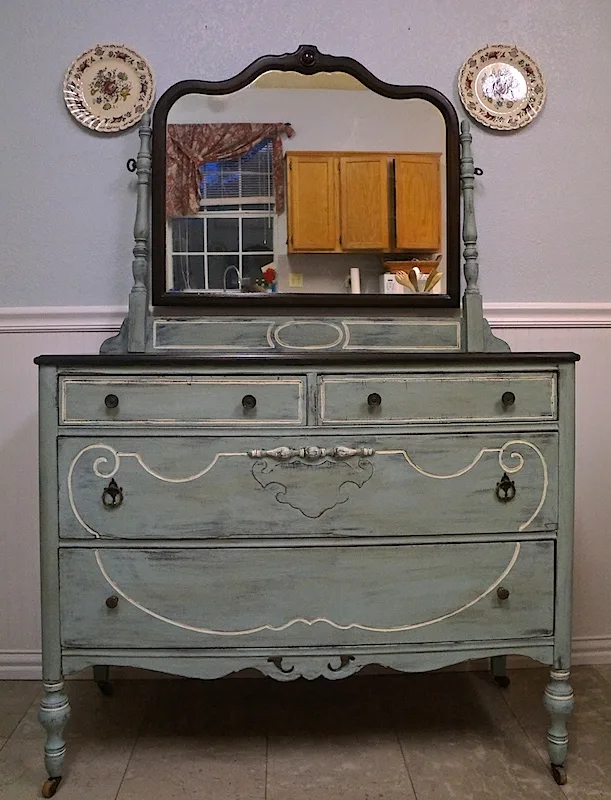
It’s dark, grainy, not straight, and you can see my janky blinds and random kitchen countertop items in the background.
Compare that to a more recent photo I took:
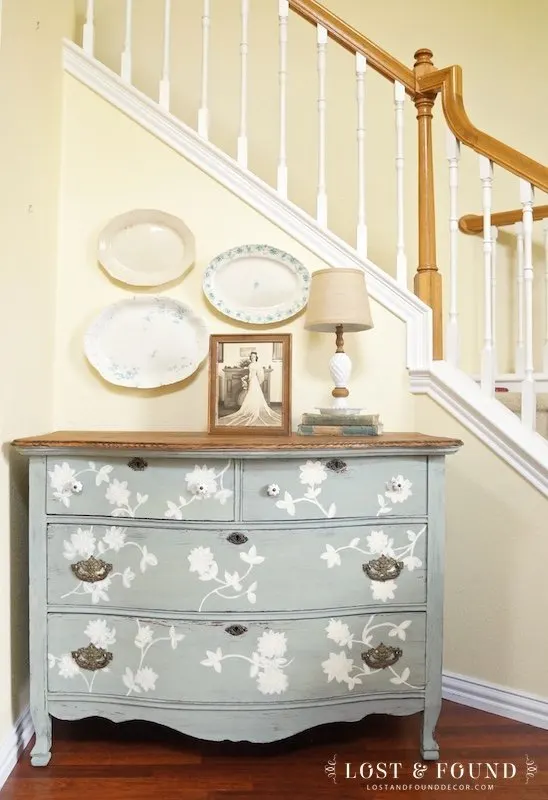
It’s bright, the colors are spot-on, the perspective is right, and there are no mirrors showing weird things in the background.
Now before you start to think that what makes the difference in these two photos is probably tons of money spent on a more expensive camera, professional lighting, and expensive editing software, let me tell you the honest truth–
My camera from 3 years ago is my same camera now. I have no professional lighting. I have purchased no expensive editing software.
My skills were the only thing that changed over the past three years, not my equipment. And the changes weren’t massive (I still don’t know all of the right photography words and how all the settings on my camera work), but really quite simple.
Seriously, if I can take good pictures, so can anyone.
So today I have 5 simple tips for better photos that will take your photography from “so-so” to “pretty darn good.” Not everyone will need to start at Step 1 or even Step 2, maybe all you need is Step 4 or 5. But the point is wherever you are, take one step forward in learning a new skill to improve your photos.

Step 1. Buy a Good DSLR Camera.
The bad news is any DSLR camera costs more than your standard digital point-and-shoot. The good news though is that there are good DSLR cameras that probably cost less than you think.
This is the camera I use.
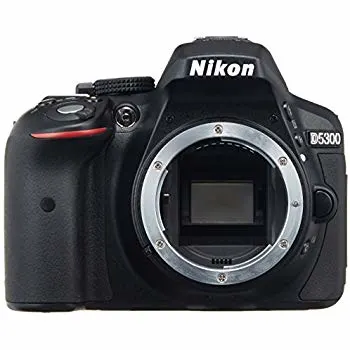
It is a Nikon D5300 with a 50mm lens. You can buy a used one of these right now on Amazon for a little less than $300, and a a good lense to go with it for another $200. It is a DSLR camera, but is nowhere close to top of the line.
The standard in DSLR cameras are Canons, and I have had to sheepishly admit at blog events that I use a Nikkon. But this guy has served me well, and I think it’s a great camera for the money. I have found it to be pretty user friendly as has held up well.
So if you don’t have a DSLR, getting one is the first step you need to take to improve your photography. The basic point-and-shoots, or iPhone cameras just can’t consistently cut it. But don’t feel like you have to go take out a second mortgage on your house to buy a good camera.
Step 2 : Get your Hands on some form of Editing Software
I have a Mac laptop, and so my editing is all done through iPhoto, which is free software already on my Mac.
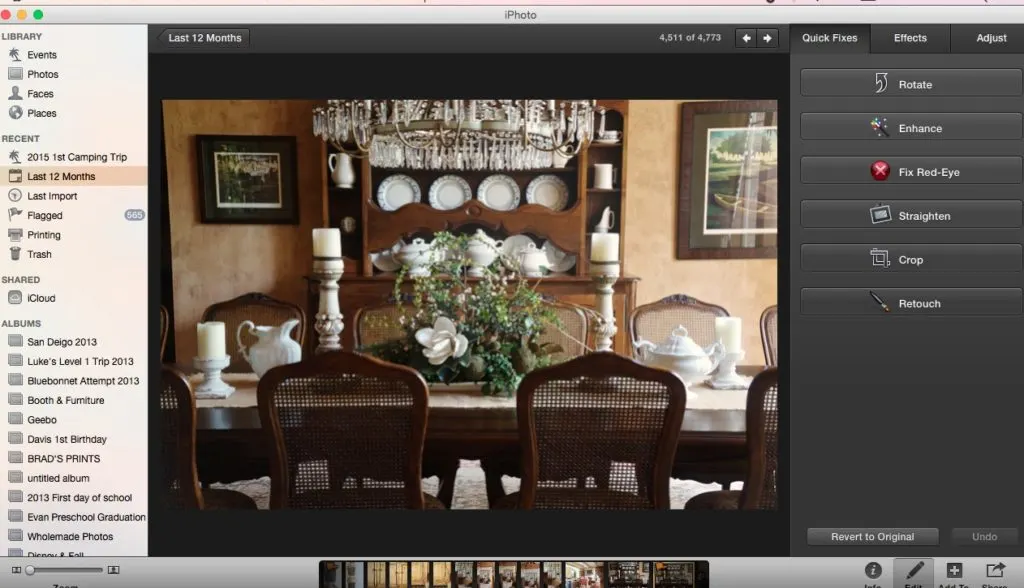
Again, it’s not top of the line editing software like Photoshop or Lightroom, but it gets the job done and it’s user-friendly enough for me to navigate.
If you don’t have a Mac, then you can upload your photos onto Canva.com online and use it as another editing software.
Rarely are environments for shooting photos perfect, so being able to do some simple edits of your photos afterward is really important.
Key areas to tweak in your editing are the brightness, shadows, colors, and definition of your photos.
For example, here is a photo completely unedited.
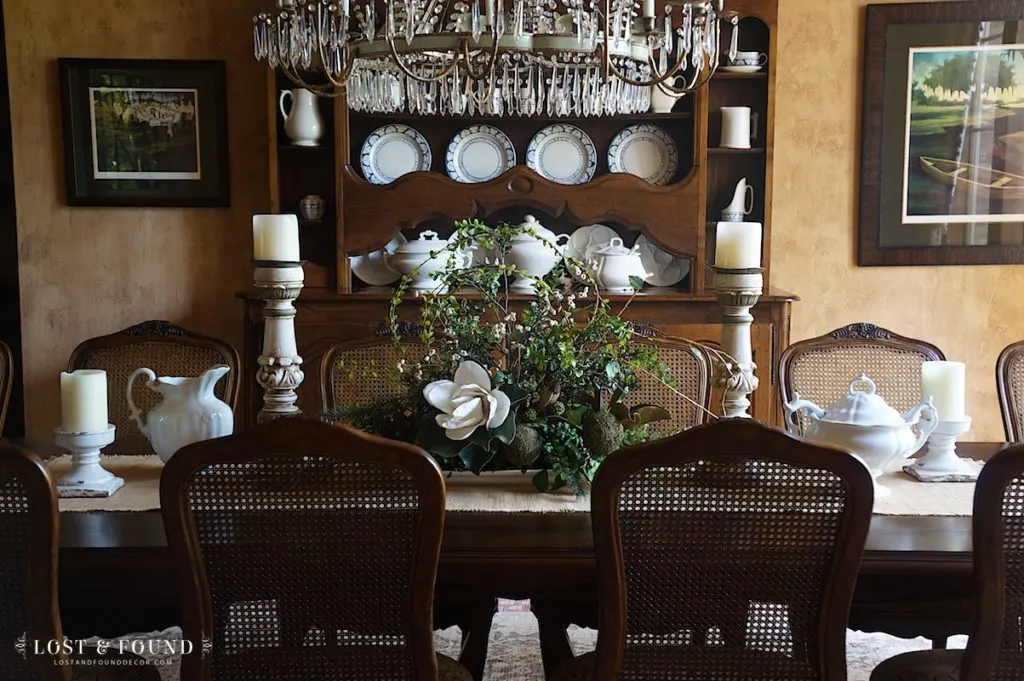
It’s already a pretty good photo, but it’s a little dark and the shadows under the table are a little too intense. It also could use a little tweak in the color to make it slightly more warm-toned.
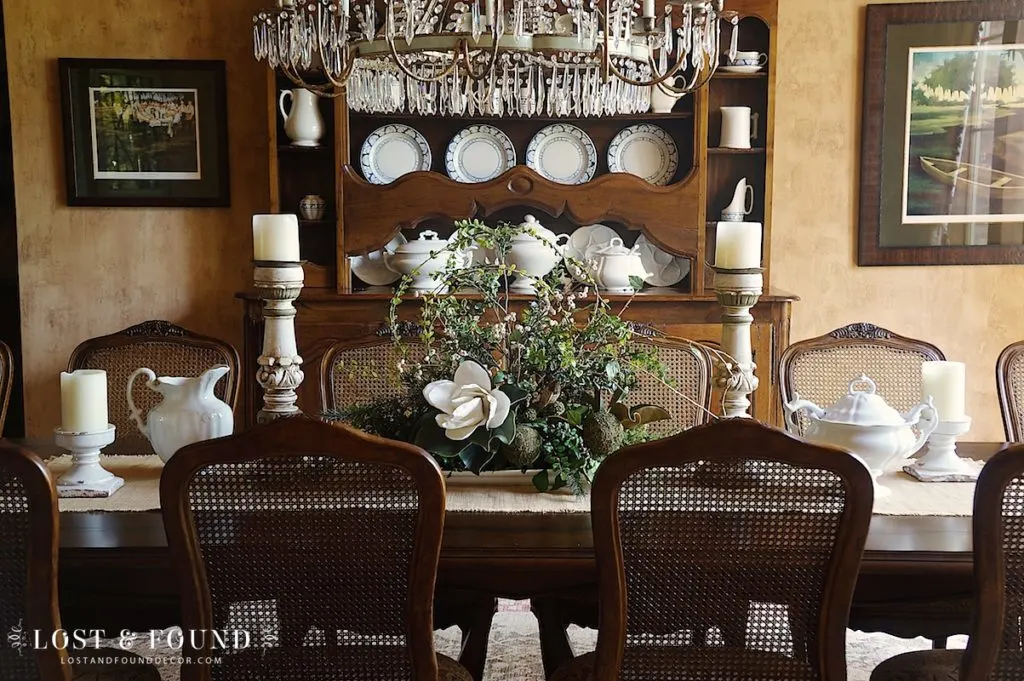
Better, don’t you think? All of those changes are very basic edits–nothing too fancy in any program. A few extra minutes spent editing photos your photos before posting can take them to a whole new level.
Step 3: Put your Camera in Manual Mode
For over a year I was too scared to shoot pictures in anything but Automatic mode. I assumed the camera was surely smarter than I was and could do a great job on its own. Well turns out my human brain is smarter than my digital camera, and it needed me to tell it what to do.
Shooting in manual mode allows you to do all sorts of things, but I want to focus on just 3: change the amount of light coming into your photo, change the colors your camera is translating onto the photo, and change the level and object of focus of your photo.
There are technical terms that go along with those three things–but I am going to spare you them. My point is to stop being afraid of manual mode. It is your friend.
Every camera is different, so take out your instruction manual and do a little reading about your camera’s manual mode–but more importantly, start changing things and see what happens!
What happens when you change the exposure?
How about when you lower the F-stop?
Or when you change the white balance?
If you play around with your settings, you will quickly begin to see what each tweak will do, and you will start getting a feel for what settings work the best in your space. I promise you, it’s not as hard as you think.
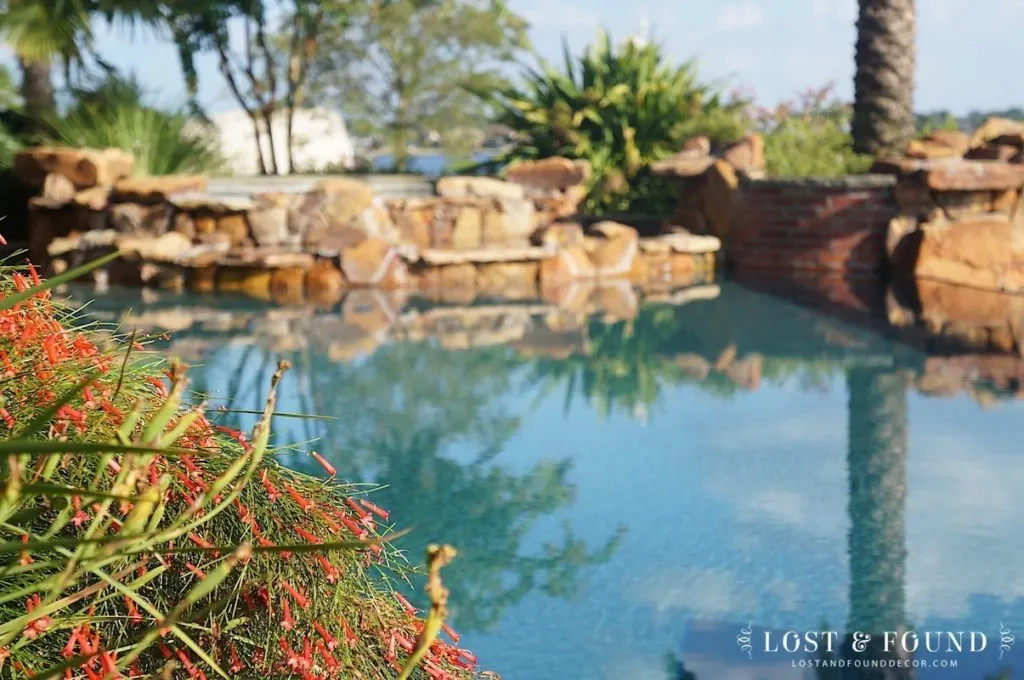
Step 4: Never, ever, ever use a Flash
I’m not talking about the professional flash and lighting setups, but about that little red-eye causing do-dad on top of your camera.
This kind of flash is your ultimate enemy in photography. Natural light however is your best friend.
What this means is that if you are wanting to photograph an object well, you need to be patient and wait until good, natural light appears in your space.
This means no more flipping on the flash and photographing your just-finished project at night in your kitchen with all of your fluorescent lights on (not saying I’ve ever done that or anything . . . ).
Like I said above when talking about editing, you can brighten up a photo some during the editing process if you need to, so your light doesn’t have to be perfect. There does have to be at least some natural light to work with though, so get to know where and when the light shows up in your space.
Over time I have found the brightest spots in my house where the most natural light comes in, and that is where almost every piece goes to be photographed.
Sometimes if the day is really cloudy and not enough sunlight is coming in, I will drag something outside and shoot it out there. Or sometimes I just wait until a sunnier day comes. But under no circumstances do I turn on a bunch of lamps and overhead lights, pop up the flash, and shoot anyway. At least not anymore 🙂
Step 5: Pay attention to your Composition
Remember my blue dresser from 3 years ago, and all the unattractive things you could see in the mirror?
That was a composition issue. I needed to learn how to set up a nice stage for my photo. How to not make it look too crowded, or wonky, or too sparse.
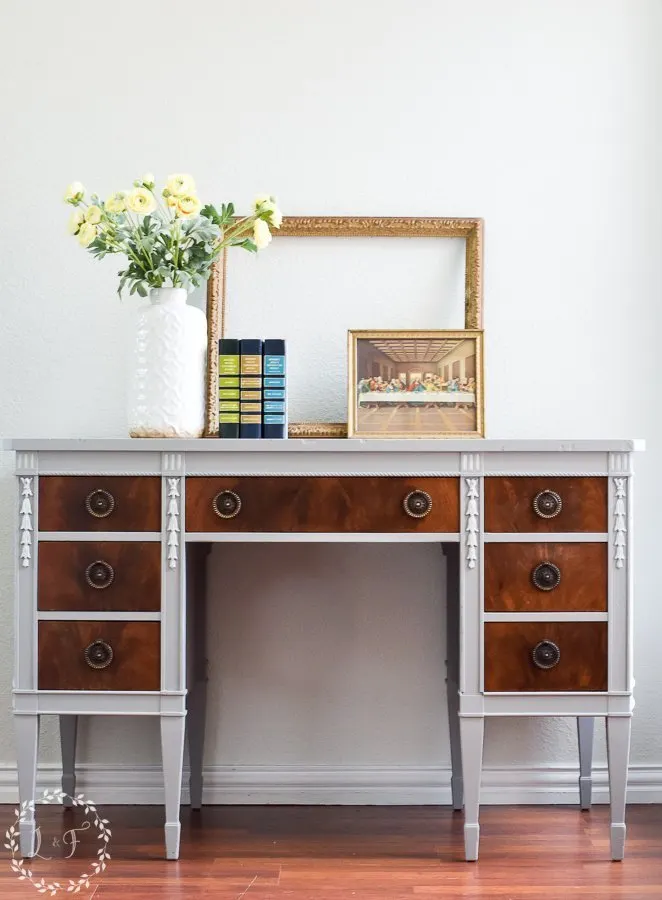
When setting up a shoot, make sure your arrangement is balanced and pleasing to the eye. Find one pretty, blank wall in your home you can use as your stage (you all always see my living room wall!), or lay down a white piece of posterboard for a clean background of a close-up object.
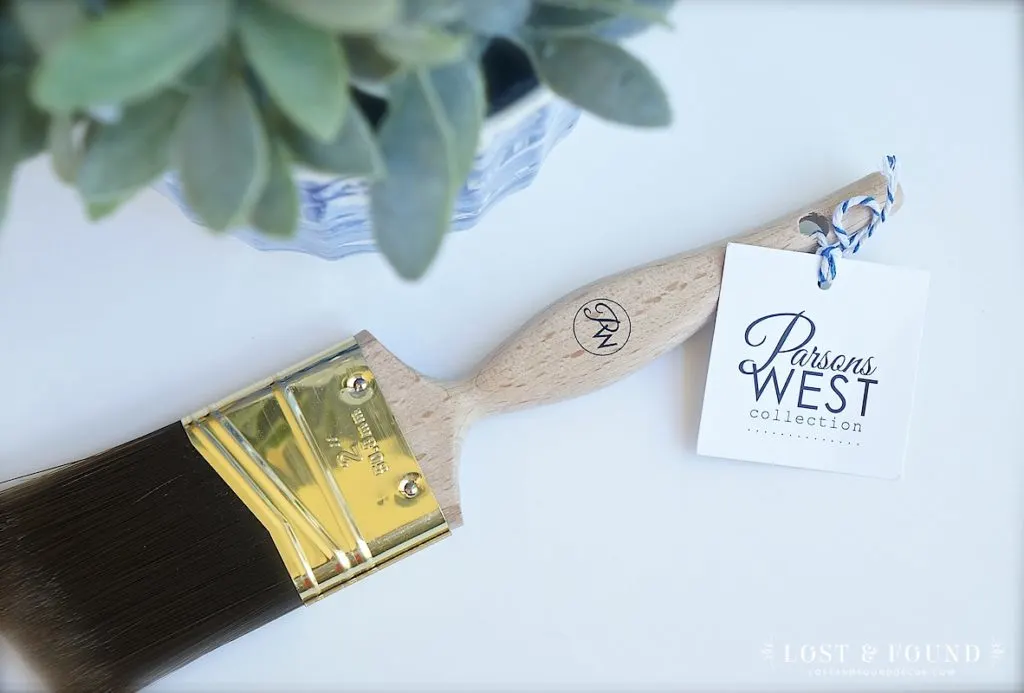
Always photograph items at eye level. Don’t stand above something and point down or squat down and point up–it will make the lines and perspective of what you are photographing be off.
Here is another old photo of mine to show you what I mean. I did not shoot the chest at eye level, but shot downward at it, which made the sides of the chest run inwards.
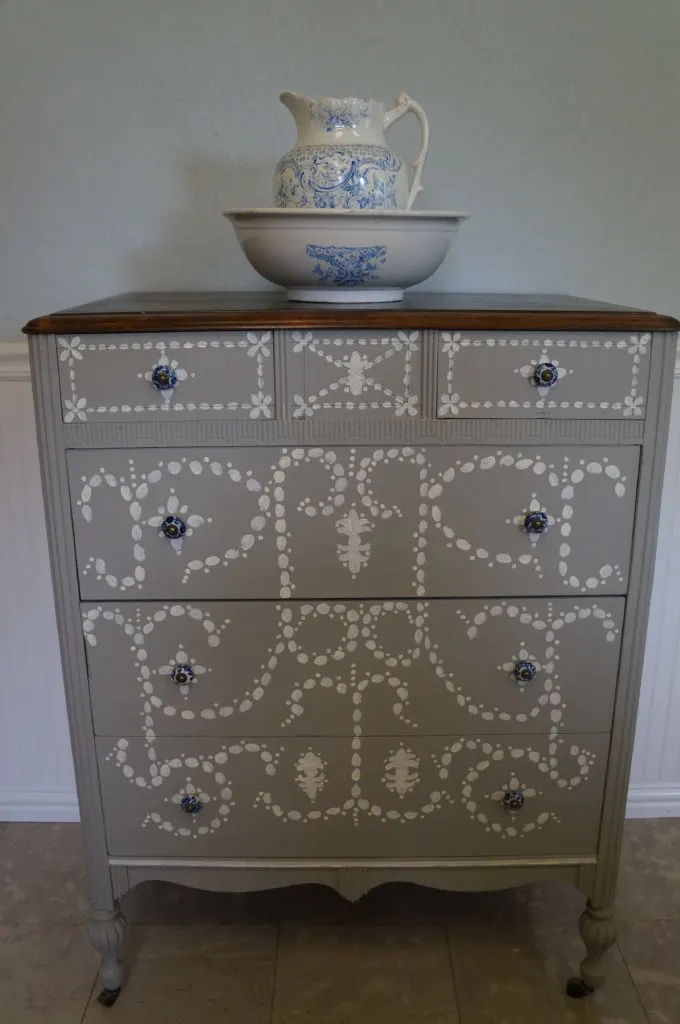
In the next picture though, see how the lines of the dresser are all straight and level? Nothing looks wonky because I got far enough back from the dresser so that I could squat down and make sure my camera was at the level of the piece. Changing up that one thing will make a huge difference in your photos.
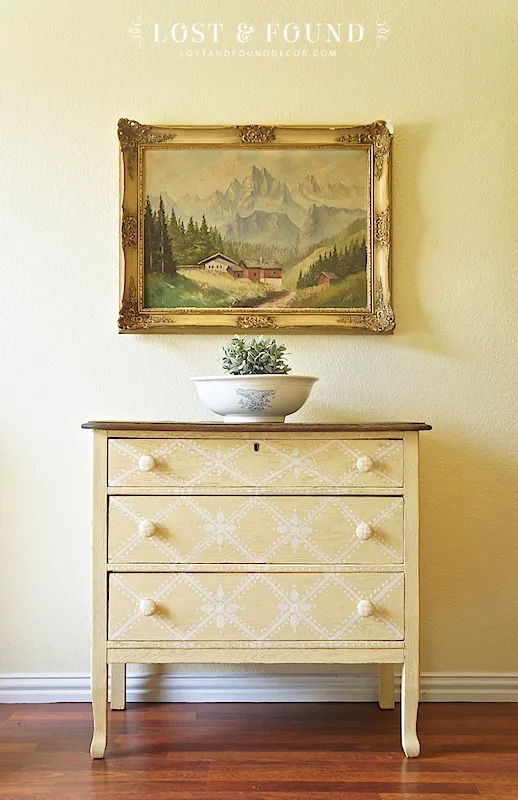
Getting better at composition will take a little practice, but I find it fun to play around with setting up a photo scene. Also, taking some time to scroll through quality photos online, paying attention to what you like and what is pleasing will help you better your composition skills.
Standing right in front of something and shooting it straight on isn’t the only way to photograph a piece. Practice different angles, and positioning your subject in different parts of the scene to create new, interesting photos.
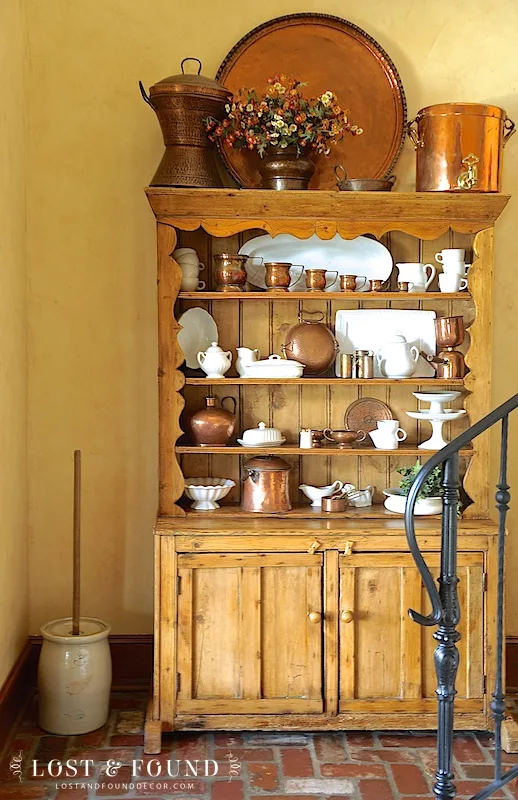
Wherever you are at in your photography skills, why not make a goal this year to take one step forward in bettering your photos? Maybe for you it’s just getting that first DSLR camera, or maybe it’s finally taking it out of automatic mode and into manual 🙂
Maybe you have manual mode down but you need to get better at using natural light and creating a better composition. Or maybe you need to commit the few extra minutes to edit your photos before sending them out into the world.
The good news though is you don’t have to do all of that to start having better photos–just start with one step and see where it takes you. Sometimes little changes can make a big, big difference.


Ashley ~ 3 Little Greenwoods
Wednesday 10th of February 2016
Fabulous post, Melanie! I love how you remind us about where and how to stand we taking our pictures. It's so true but it takes experience to think about these things. Take care and happy blogging! ~ Ashley
Melanie
Monday 15th of February 2016
Thanks Ashley. I am so glad it was helpful :)
Patra
Sunday 30th of August 2015
I think these are the best layman-term tips I've ever read. I do everything wrong :-) Thanks for this.
teresa
Friday 28th of August 2015
What a great little primer. Thanks for the basic, but easily overlooked hints. I so admire the photography I see on all the blogs and your is no exception. Btw, are all those pics of your house? If so, you should feature it more...SO charming.
Melanie
Thursday 17th of September 2015
Some of the photos are of my house, thanks for the encouragement :) There is so much about it that I isn't "how I want it", that I am not very quick to share photos of it. But maybe I will do that more :)
Lynne Gaylor
Thursday 27th of August 2015
Thank you so much Melanie! I have been taking photos of my home improvements, and these tips are just what I needed to start me on my way! Excellent!!
chris aka monkey
Thursday 27th of August 2015
i had to google f stop and all i can say is focal ration i don't have a camera, my daughter has a canon with all kinds of stuff so i just have her take the pics lol real easy on me xx